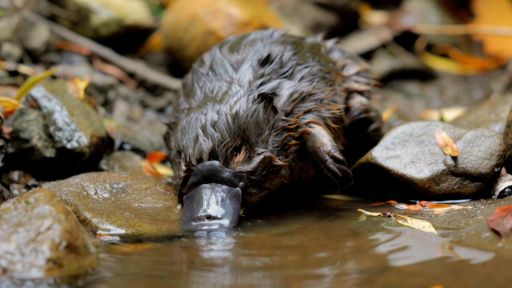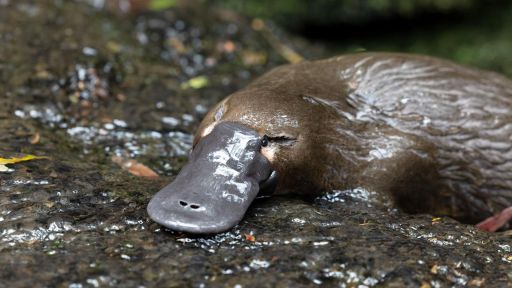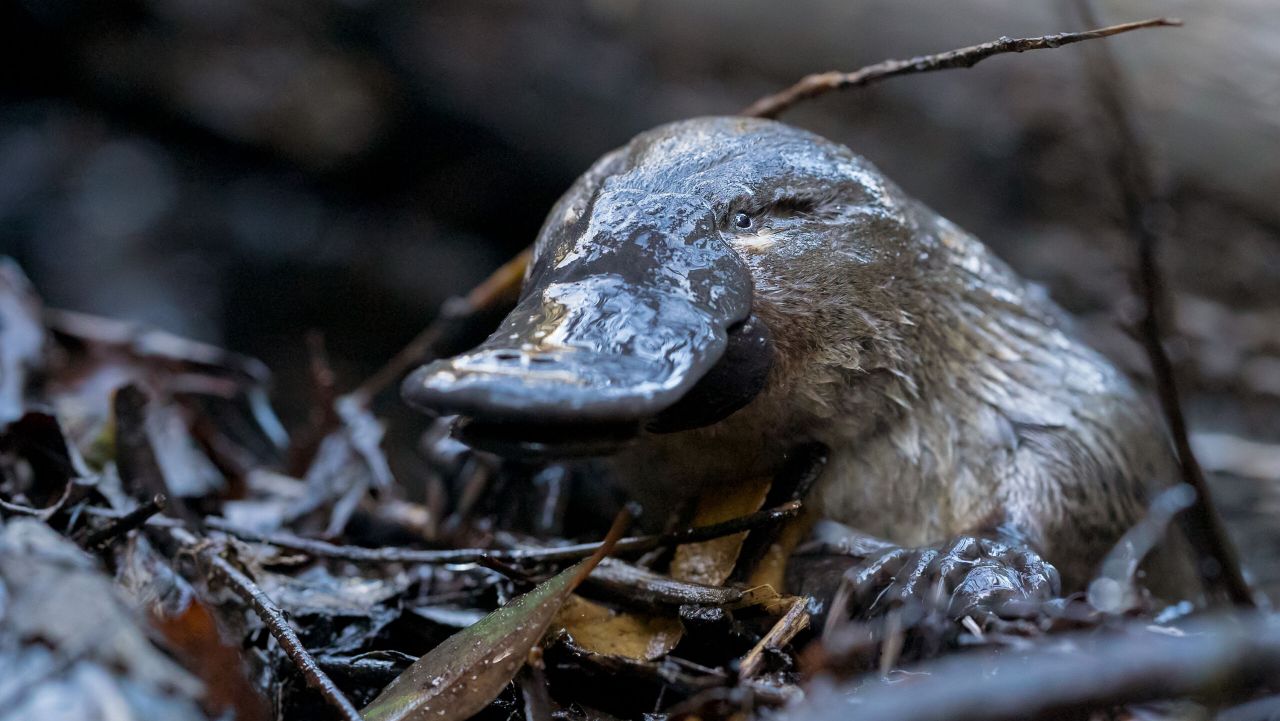
Platypus among sticks. Hobart, Tasmania, Australia. Credit: Credit: © Pete Walsh
Platypus (Ornithorhynchus anatinus): semiaquatic, egg-laying mammal endemic to eastern Australia.
Kingdom: | Animalia
Phylum: | Chordata
Class: | Mammalia
Order: | Monotremata
Family: | Ornithorhynchidae
Genus: | Ornithorhynchus
Species: | O. anatinus
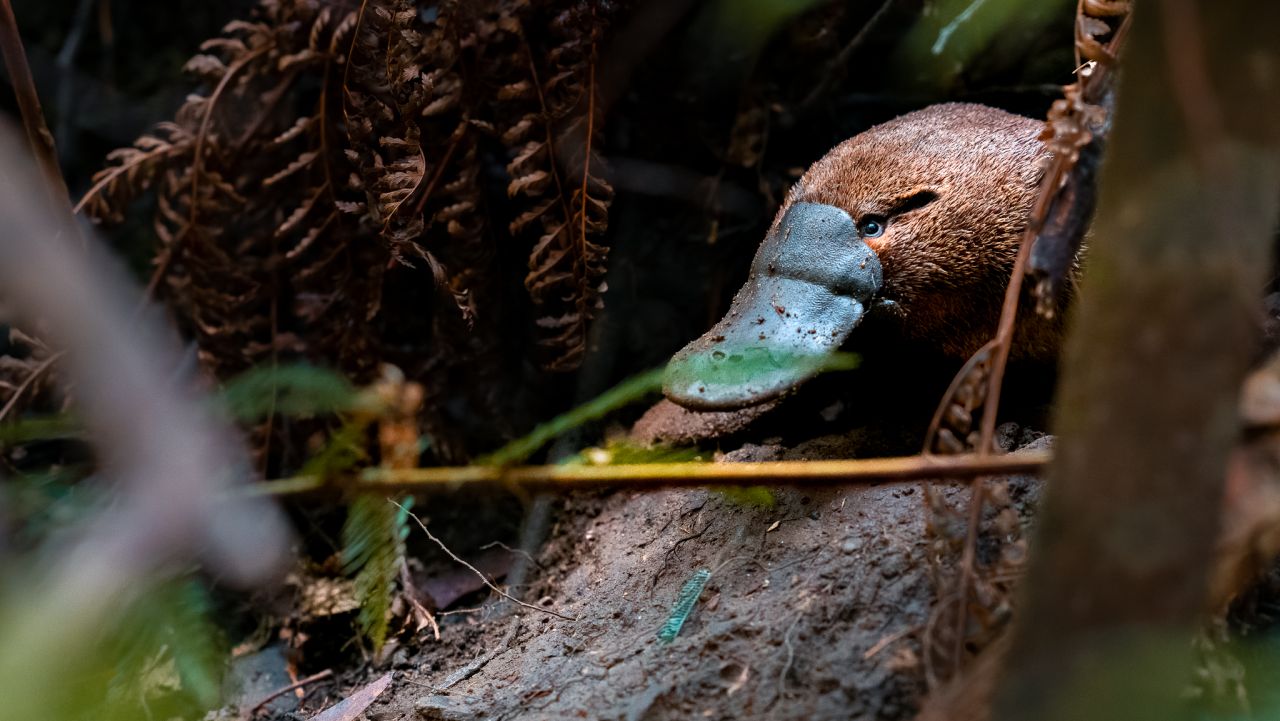
A female platypus emerges from her nesting burrow. Female platypus can dig up to 30 feet into the riverbank to make a safe place to lay their eggs and raise their young. Hobart, Tasmania, Australia. Credit: © Daniel van Duinkerken
Size and Weight:
Adult males measure 15.7 to 24.8 inches long from the tip of their bill to the tip of their tail and weigh 1.7 to 6.6 pounds. Females are smaller than males, measuring 14.5 to 21.6 inches in length and weighing 1.3 to 3.7 pounds.
Appearance:
Platypuses are mammals that are well-adapted for their semi-aquatic lifestyle. They have a streamlined body and a broad, flat tail that works like a rudder when they swim. Their fur is dense and waterproof, ranging in color from dark brown to reddish brown. When swimming, the platypus uses its short, webbed front limbs and partially webbed hind limbs to propel itself through the water. Their distinctive bill is not hard like a duck’s bill but is soft and rubbery. It’s extremely sensitive and filled with thousands of electrical receptors. When hunting, platypus shut their eyes, ears and nostrils, using electricity to find their prey. Platypuses don’t have any teeth but can grind up food between the rigid plates in their bill.
Platypuses are one of the few venomous mammals. Males possess a horny spur on their ankles, which is connected to a venom gland in the upper leg. The venom can cause severe pain to humans. Although it is not lethal, the pain caused has been described as excruciating.

In the pristine, high reaches of the Hobart Rivulet, a platypus finds a route around a high waterfall. Hobart, Tasmania, Australia. Credit: © Daniel van Duinkerken
Diet:
Platypuses mainly consume aquatic invertebrates, particularly insect larvae. Their diet also includes free-swimming organisms like shrimps, swimming beetles, water bugs and tadpoles. They typically hunt at night, with an average foraging period lasting 10 to 12 hours per day. When foraging underwater, a platypus closes its eyes, ears and nostrils. Its primary sense organ is the bill, which is equipped with receptors sensitive to pressure and electricity.
Habitat:
Platypuses can be found in freshwater systems, including rivers, streams and bodies of freshwater. Their habitat ranges from tropical rainforest lowlands and plateaus of far northern Queensland to cold, high altitudes of Tasmania and the Australian Alps.
Geography:
The platypus is endemic to Australia. Their range extends from western Victoria to about as far north as Cooktown in Queensland. They can also be found on Tasmania and King Island, as well as on Kangaroo Island.
Breeding:
The breeding season varies with distribution and within populations. The height of spring is typically the peak of the breeding season. During this time, the male’s venom glands are at their largest size because they use their venom when competing with other males. Males initiate the mating interactions. Mating doesn’t happen immediately. Courtship rituals include aquatic activities, such as rolling sideways together, diving, touching and passing. They may put their bill on each other’s tail. This behavior lasts from less than a minute to over half an hour and is usually repeated over several days.
After mating, a pregnant female builds a nest for her eggs in a long complex burrow. She spends 4 to 5 days collecting wet nesting material to prevent her eggs and hatchlings from drying out. After a gestation period of 21 days, she will lay 1 to 3 eggs in her nest. During the egg incubation period of about 10 days, a female holds the eggs pressed by her tail to her belly, while curled up. When the young hatch, the female starts secreting milk for the young. This lactation period can last 3 to 4 months. The female spends most of this time with her young in the burrow, and as the young grow, she increasingly leaves them to forage. Towards the end of the summer, the young emerge from the burrow and are on their own. Both sexes become reproductive in their second year. But many females do not breed until they are at least 4 years old.
Social Structure:
The platypus is largely a solitary animal. However, several individuals can share the same body of water. While vocalization has not been recorded in the wild, captive platypuses produce low-pitched growling sounds when disturbed or handled.
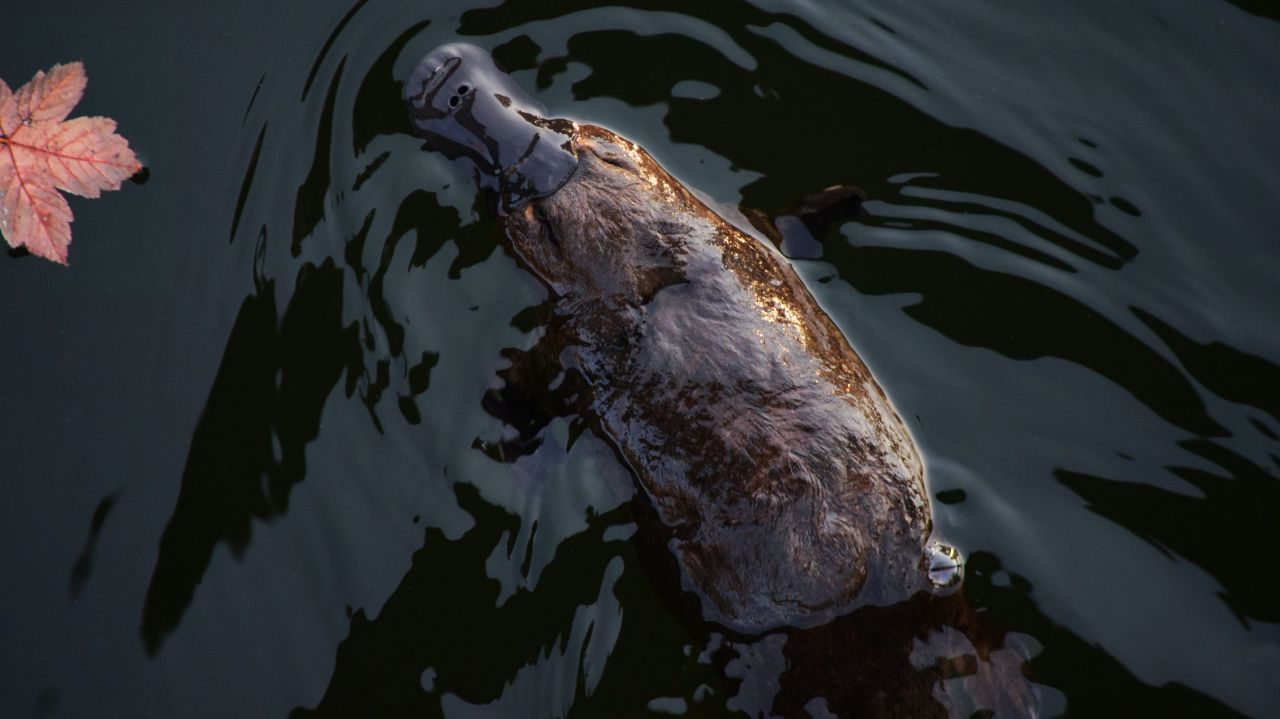
Lifespan:
Platypuses live up to 20 years in captivity and in the wild.
Threats:
Habitat loss is the greatest threat to the species. Land clearing and dams that disrupt the natural water flow are especially harmful to the platypus. Natural predators of the platypus include snakes, water rats and goannas, as well as introduced animals like foxes, cats and dogs.
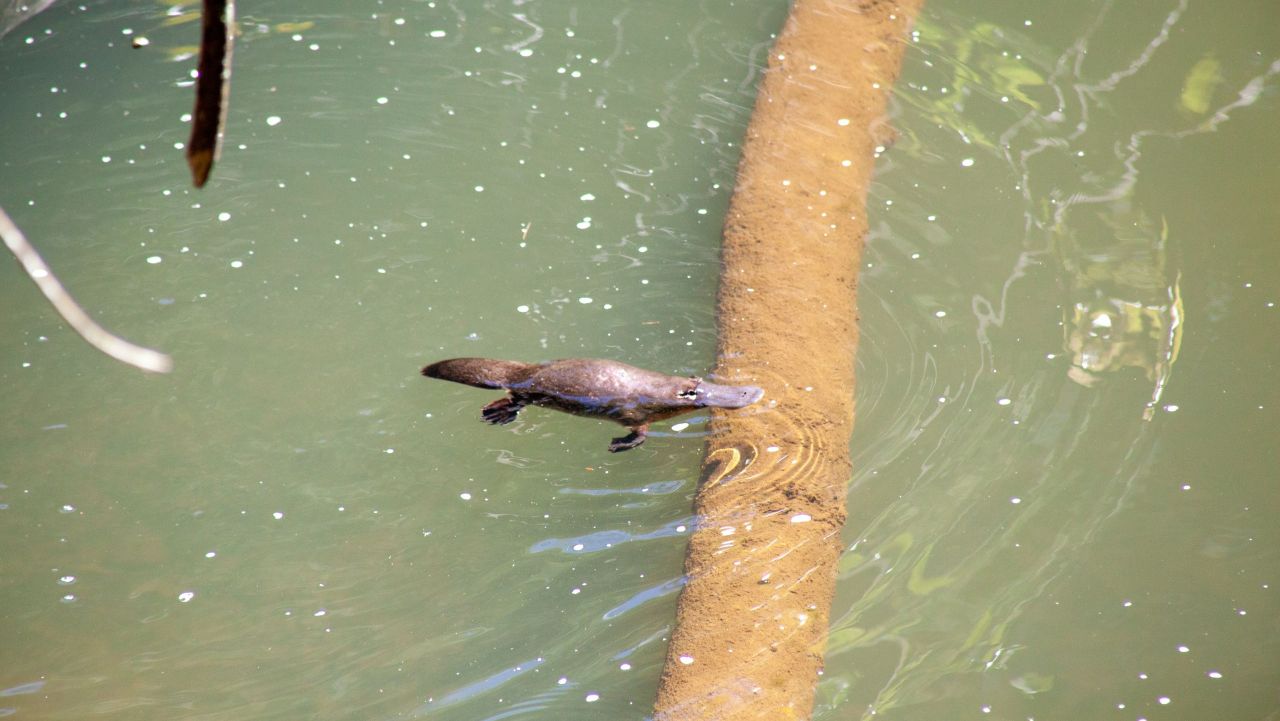
Conservation Status:
As of 2014, the platypus is listed as Near Threatened by the IUCN’s Red List of Threatened Species.
Conservation Efforts:
Legislation protects the platypus in all of the states where it is found. Individuals cannot be captured or killed, except for scientific research.
Sources: The Australian Museum and NATURE’s The Platypus Guardian.


